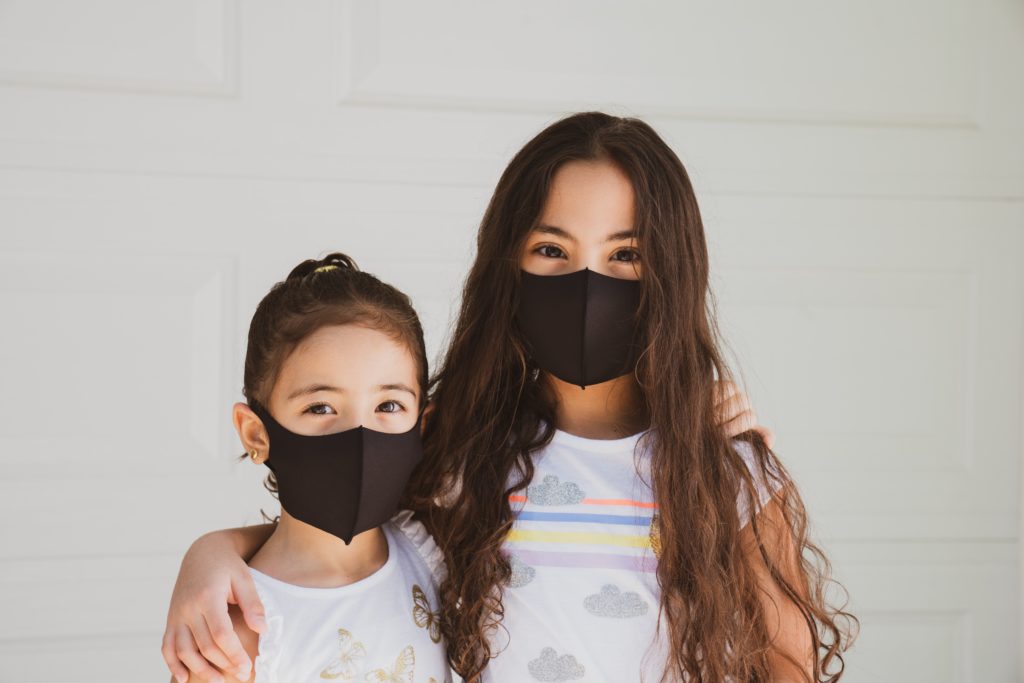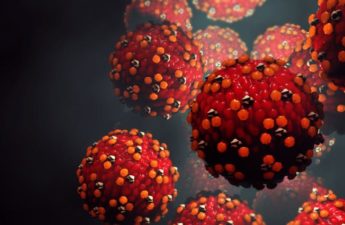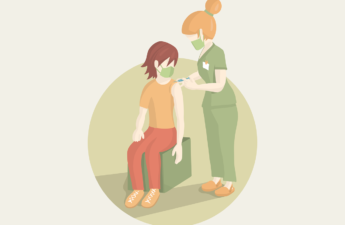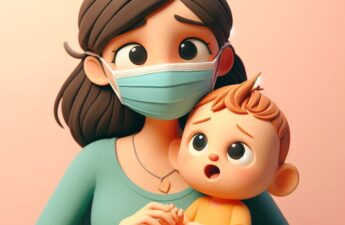
Sharon Bogan
Public Health – Seattle & King County
COVID-19 risk for people in our community has increased over the past several weeks. In late April, our case rates put King County into the Medium COVID-19 Community Level. Unfortunately, we continue to receive many reports of COVID-19 cases and clusters throughout the community, including from schools and childcare centers.
With this increased level of COVID-19, parents may be wondering what they should consider for masking and testing right now.
Should my child wear a mask in school and child care?
The risk of exposure to COVID-19 is higher than a month ago, both within schools and in the community. That’s why Public Health has been recommending wearing masks in indoor public settings and other prevention measures, particularly since we reached the Medium Community Level.
Each family needs to weigh the risks of benefits of wearing masks for their children, but at this time, parents should know that the risk of getting COVID-19 has been on the rise the past few weeks. Here are some tips for your family:
- Assess the health risks within your family and take precautions, especially if your child or family members are immunocompromised or have conditions that put them at higher risk for severe COVID-19 disease. Wearing a mask is especially important for people at higher risk for severe disease. You may want to talk with your families’ healthcare provider to make a plan to obtain COVID-19 treatment for those who are at higher risk of severe illness if they become infected.
- You can also ask your healthcare provider to explore preventive medications for people who are immunocompromised. When taken before infection or exposure, a medication called Evusheld helps your body fight the coronavirus and avoid getting really sick or needing to go to the hospital.
If you don’t have a health care provider, Public Health’s Community Health Access Program can connect you to medical providers and health insurance options.
Children can be exposed to COVID-19 in many settings including schools, childcare centers, home, extra-curricular activities, family events, and other community-based activities. For this reason, it’s important to take precautions and steps to reduce the risk of COVID-19 throughout the community, and to consider masking during other activities in your child’s life. If your child wears a mask at school, but then goes to an indoor party unmasked with a group of other people — especially if there isn’t good ventilation — then their risk has just increased.
What is the mask guidance for schools and child care right now?
Public Health recently issued updated recommendations for schools and child care in King County. Given the increasing risk of COVID-19 transmission, Public Health is recommending masking among all students and staff exposed to COVID-19 to help prevent further spread when there are concerns for ongoing transmission at schools and child care. Public Health recommends this approach even if there is just one case who was contagious at school if they were in close contact with others.
This could mean masking would only be implemented in a specific classroom or group of students, but could also mean universal indoor masking is recommended for the entire school, depending on the extent of potential spread. Universal indoor masking in these cases is a recommendation and not a requirement.
It’s important for staff and students to use high quality, well-fitting masks like N95, KN95 and KF94 when possible.
And if you or your child has an exposure from school or child care, test immediately and repeat testing every 5-7 days. This can help to identify cases and prevent further spread in school.
How dependable are at-home rapid test? Do they work for the COVID-19 variants?
Rapid at-home tests can help identify people who have COVID-19 and might spread it to others, but they are not perfect. The rapid at-home tests work for all the variants currently circulating. We encourage people to use any test they can access, whether that is an at-home rapid test or PCR test.
When testing instructions are followed correctly, self-tests are very good at detecting a high viral load of COVID-19, which is when someone is likely contagious. If you receive a positive result, you can be very confident in that result and should isolate.
Rapid tests can be negative in people with COVID-19 early in the infection when the levels of virus are lower, even if they have symptoms. It can take a few days for the test to become positive as the level of virus increases. For this reason, a negative rapid test cannot “rule out” the possibility that someone is infected but not yet testing positive.
Self-tests are more accurate when you test twice if you get a negative result. Take a second test 24-72 hours after the first. If either test is positive, you should consider yourself infected. That’s because the accuracy of a negative result depends on many factors, such as how long after exposure you take the test and how much virus is in your body at that time.
Make sure you test at least 5 days after exposure and follow instructions on the box to get the best chance of an accurate reading.
Consider testing in these situations, even if you are vaccinated
- Immediately if you have symptoms of COVID-19 like a cough, fever, or sore throat. If you are symptomatic, and test negative, stay home and test again in 24-48 hours.
- If you have been near someone who ended up having COVID-19, even if you don’t have symptoms. In this case, it is good to test 5-7 days after exposure.
- Immediately before family gatherings, parties, or other indoor group events or as close to the time of the event as possible, especially if there will be unvaccinated children, older individuals, or people who are immunocompromised or at risk of severe disease
- Consider testing after you have participated in larger indoor events without masks.
Advice for families traveling Memorial Day weekend and beyond
- Make sure you are up to date on all recommended COVID-19 vaccine doses, including booster doses. Boosters provide important protection against hospitalization and death, especially in adults. For information on where to go for a booster, visit our Getting Vaccinated page.
- Use high quality, well-fitting masks (N95,KN95, and KF94) in indoor public settings and group gatherings.
- Check on ventilation where you are going. Improving indoor air quality through ventilation, filtration and other strategies like germicidal UV technology can make a big difference in reducing risk. Open windows and doors. Outdoors is safer than indoors. The EPA provides information about improving indoor air quality.
- Test before gathering with high-risk people and just before air travel.
Originally posted 5/24/22


